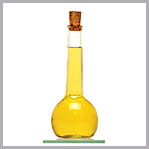Instead, replace unhealthy and fattening foods with healthier alternatives -- eat the same amount of food as before but eat lower-calorie foods with a healthier balance of nutrients. Try baked potato, carrots, an apple, or another healthier and lower-calorie food. Again, you are eating fewer calories, but you are also filling your stomach and adding variety to your diet.
Maintaining a healthy weight is important to reduce the risk of cancer and other chronic diseases. Achieving an ideal weight need not be the first goal, though, substantial benefits can come from stopping weight gain than beginning to achieve a modest amount of weight loss.
 Limiting saturated fat may be important to reduce the risk for cancer and heart disease. Choose lean meats and low fat dairy products and substitute with vegetable oils (canola or olive oil) instead of butter or ghee.
Limiting saturated fat may be important to reduce the risk for cancer and heart disease. Choose lean meats and low fat dairy products and substitute with vegetable oils (canola or olive oil) instead of butter or ghee.

Greater consumption of vegetables and fruits has been shown to lower the risk of several cancers, including cancers of the stomach, lung, mouth, esophagus and colon. Vegetables and fruits are packed with vitamins, minerals, fiber and antioxidants which together account for their beneficial effect. Eat vegetables and fruits with the most colour as the colour indicates that they have phytonutrients or cancer fighting qualities.
A fruit and vegetable serving may be smaller than you think. Any one of these could qualify as one serving size.
- Medium-size piece of fruit
- ¾ (6 oz) of 100 percent fruit/vegetable juice
- ½ cup cooked vegetables or fruit
- One cup of raw, leafy vegetables
- ½ cup of cooked dry peas or beans
- ¼ cup dried fruit
The fruits and vegetables have been grouped based according to the major colour of each phytonutrient group.
- Eat Right
- Know your Veggies, Fruits, Nuts and Herbs
- Eating Right and still being a Vegetarian
- Water Works
- Go the Juicy Way
- Yes- yes and No- No
- Food Facts
- Meal Plans
- Analysis of Fad Diets
- Calorie Counter
- Sprouts
- Food Excuses and how to beat them
- Myths and Misconceptions about Food
- Are you getting Enough Fibre?
- Perfectly balanced Indian Food: An Overview

